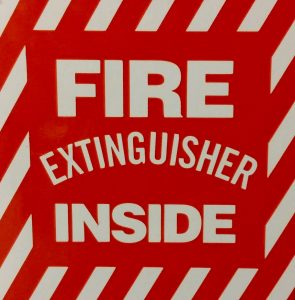Like it or not, digital textbooks are here and will soon be the primary form of textbook used by students and teachers. Host Kevin Patton discusses this trend and outlines ways to leverage digital textbook features for more effective teaching and learning. Mike Pascoe brings us a Book Club recommendation and Kevin discusses arms, arm-lengths, and legs.
- 00:48 | Digital Is Here
- 10:09 | Sponsored by AAA
- 11:02 | Digital Textbook Love
- 22:43 | Sponsored by HAPI
- 23:59 | Book Club: Digital Minimalism
- 26:29 | Sponsored by HAPS
- 27:19 | Arm's Length
- 32:35 | Staying Connected
If you cannot see or activate the audio player click here.
Please take the anonymous survey: theAPprofessor.org/survey
Questions & Feedback: 1-833-LION-DEN (1-833-546-6336)
Follow The A&P Professor on Twitter, Facebook, Blogger, Nuzzel, Tumblr, or Instagram!
Lovers of print are simply confusing the plate for the food. (Douglas Adams)
Digital Is Here
9.5 minutes
Like it or not, digital textbooks are here. Whether we call them eTexts, electronic textbooks, eTextbooks, or whatever, many publishers are already in the digital-first or digital-only mode. Before long, digital textbooks will soon be the primary way that students use textbooks.
- History of the Ebook: The Changing Face of Books (journal article, but dated) my-ap.us/31koutu
- A Brief History of eBooks (yep, very brief) my-ap.us/30x6Xio
- Digital Is Coming For Your Textbook (blog post from the Textbook & Academic Authors Association) my-ap.us/3kqkujY
Sponsored by AAA
1 minute
A searchable transcript for this episode, as well as the captioned audiogram of this episode, are sponsored by the American Association for Anatomy (AAA) at anatomy.org.
Don't forget—HAPS members get a deep discount on AAA membership!
Digital Textbook Love
12 minutes
Digital textbooks have a lot of features that can be leveraged for teaching and learning—including flipped courses, distance courses, or remote pandemic teaching. For many of us, our fumbling first tries are awkward and uncomfortable—but we may eventually fall in love with digital textbooks.
- Benefits and Helpful Features of eBooks (blog post) https://my-ap.us/31ngqrR
- Running Concept Lists Help Students Make Connections | Episode 8
- Concept Lists Help Students Build Conceptual Frameworks (online seminar)
Sponsored by HAPI Online Graduate Program
1 minute
The Master of Science in Human Anatomy & Physiology Instruction—the MS-HAPI—is a graduate program for A&P teachers, especially for those who already have a graduate/professional degree. A combination of science courses (enough to qualify you to teach at the college level) and courses in contemporary instructional practice, this program helps you be your best in both on-campus and remote teaching. Kevin Patton is a faculty member in this program. Check it out!
Book Club
2.5 minutes
- Digital Minimalism: Choosing a Focused Life in a Noisy World
- by Cal Newport
- amzn.to/37LHfqP
- Recommended by Mike Pascoe
- For the complete list (and more) go to theAPprofessor.org/BookClub
- Special opportunity
- Contribute YOUR book recommendation for A&P teachers!
- Be sure include your reasons for recommending it
- Any contribution used will receive a $25 gift certificate
- The best contribution is one that you have recorded in your own voice (or in a voicemail at 1-833-LION-DEN)
- Contribute YOUR book recommendation for A&P teachers!
- For the complete list (and more) go to theAPprofessor.org/BookClub
Sponsored by HAPS
1 minute
The Human Anatomy & Physiology Society (HAPS) is a sponsor of this podcast. You can help appreciate their support by clicking the link below and checking out the many resources and benefits found there. Watch for virtual town hall meetings and upcoming regional meetings!
Arm's Length
5 minutes
Two meters or six feet are often given as a minimum safe distance when distancing to reduce the spread of airborne viruses such COVID-19. As a practical guide, some sources state that this distance is about "two arm lengths." But Kevin questions whether "one arm span" may be what these sources really mean—and may be a better practical guide. Otherwise, people may be distancing at only about four feet and not the recommended two meters (6.5 feet)—about 60% of the most effective minimum distance. Because Kevin can never leave well enough alone.
- In the United States, the CDC recommends, "To practice social or physical distancing, stay at least 6 feet (about 2 arms' length) from other people who are not from your household in both indoor and outdoor spaces." my-ap.us/2PBO3AS
- The Canadian Health Service similarly advises, "keeping a distance of at least 2 arms lengths (approximately 2 metres) from others, as much as possible" my-ap.us/3fAWc32
- "The arm span measurement is usually very close to the person's height. For example, a 168cm (5ft 6in) person will have an arm span of about 168cm (66in)" according to an article in Wikipedia my-ap.us/33ChKKp
- Diagram giving some rough estimates (individual measurements vary)
- Two metres or one: what is the evidence for physical distancing in covid-19? (review/analysis article from BMJ questions the 2-meter rule; includes diagram showing various levels of risk) my-ap.us/3hzDURI

If the hyperlinks here are not active, go to TAPPradio.org to find the episode page.
- More details at the episode page.
- Transcript available in the transcript box.
- Listen to any episode on your Alexa device.
- Need help accessing resources locked behind a paywall? Check out this advice from Episode 32 to get what you need! https://youtu.be/JU_l76JGwVw?t=440
Click here to listen to this episode—or access the detailed notes and transcript.













